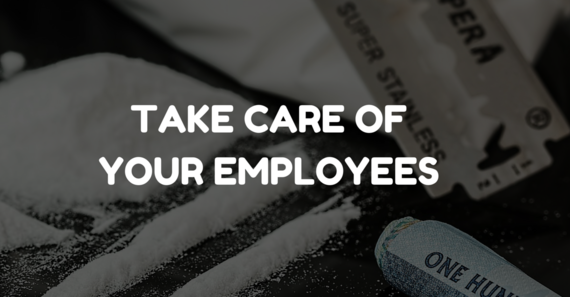Employees are the company's greatest asset. They play a deciding role in shaping the organization's future roadmap.
What happens when these employees are caught in the deadly trap of illicit drugs and/or alcohol consumption?
The statistics speak for themselves.
Here are some startling facts from 2013 National Survey on Drug Use and Health:
- Of the 22.4 million current illicit drug users aged 18 or older, 15.4 million (68.9 percent) were employed either full or part time.
- For employed adults, aged 18 or older, the rate of alcohol use was higher (65.8 percent) as compared to unemployed adults (53.8 percent).
- Most binge and heavy alcohol users were employed. Out of 58.5 million adult binge drinkers, 44.5 million (76.1 percent) were employed full or part time. Out of 16.2 million heavy drinkers, 12.4 million ( 76.0 percent) were employed.
Substance Abuse and Mental Health Services Administration (SAMHSA) analyzed the rates of illicit drug and heavy alcohol use across industries during 2008-2012.
According to the report, workers in the mining industry had the highest heavy alcohol consumption rate (17.5 percent) among adults aged from 18 to 64 and health care and social assistance (4.4 percent) came at the last spot.
For illicit drugs, the rates ranged from 19.1 percent among accommodations and food services industry to 4.3 percent among public administration workers.
A single addicted employee creates problem for:
Employers: The companies lose $81 billion annually due to drug abuse. Sadly, 70% of the estimated 14.8 million illegal drugs users are employed.
Coworkers: Absenteeism, withdrawal from responsibilities, excessive break during work hours, poor decision-making add burden on the shoulders of colleagues. They have to work long hours and face the odd behaviors of addicts.
Family: Family members have to bear the consequences. It brings in negativity and impacts everyone's personal and professional lives.
Workplace: When everyone shows up on time daily and do great work, there is a sense of unity among employees. They feel they belong to a group where everyone pumps in same input.
Addicts in the workplace give birth to low morale among other employees. With more stress, the productivity and enthusiasm slow down.
Here are some preventive measures to boost workplace productivity:
Take Note of Behaviour
As an employer, you must look out for the common signs, such as concentration issues, change in attitude, lending money from co-workers, an adverse change in physical appearance, of substance abuse.
Always remember:
Don't become judgemental.
The above signs just point out the possibility of a drug abuse, not a necessary outcome. Make a checklist of the employee's behavior to have a fruitful face-to-face conversation.
As you are not an expert, don't make any assumptions. With your supervising team, just jot down the performance track record.
Forward the case to Counsellors and Health Professionals
When it comes to someone's health, you must move forward with precaution. Your suspicion may result in irrecoverable outcomes.
In some cases, employees might be facing some other issues. So, it is always better to leave the matter to the professionals.
"Workplaces must establish procedures to provide assistance in a professional and consistent manner. Educate your employees. Conduct drug-free workplace programs, distribute written materials about substance abuse, show videos highlighting the negative impact of substance abuse in the workplace. Supervisors must be equipped with the adequate resources on whom they can bank on for speedy assistance," says Samuel Bierman, Executive Director, Maryland Addiction Recovery.
Discuss the issue with the trained consultants to work out the best course of action for treatment.
Face-to-Face Conversation
Discuss in the private to not make an embarrassing conversation in public. After confirming your suspicion, express your concerns and guide the employee about the treatment facilities and support groups.
Approach with the intention of helping. Your threats about firing and reminder of company's anti-substance abuse policy won't address the problem.
Make the employee feel comfortable by expressing your concerns. Be friendly and do your best to bring your employee back on track. Share the information about treatment facilities, support group, and other valuable resources.
If the person keeps on disobeying the guidelines and becomes an utter nuisance in the workspace, take a firm step by following your company's policies.
Employees Assistance Program (EAP)
In the 1940s, EAPs began as an alcohol program to address the negative impact of alcohol consumption on organization's productive growth.
EAP program helps in reducing workplace absenteeism, workspace violence, unplanned absences, and workplace stress, to count a few.
Apart from work-related issues, EAP covers personal issues in complete confidence. Employees can set up an appointment with a medical professional or a trained counselors. They have telephonic access 24 hours a day.
Employers also benefit from this program. For every dollar invested in EAP, employees save anywhere between $5-$16. The average annual cost for an EAP ranges from $12-$20 per employee.

